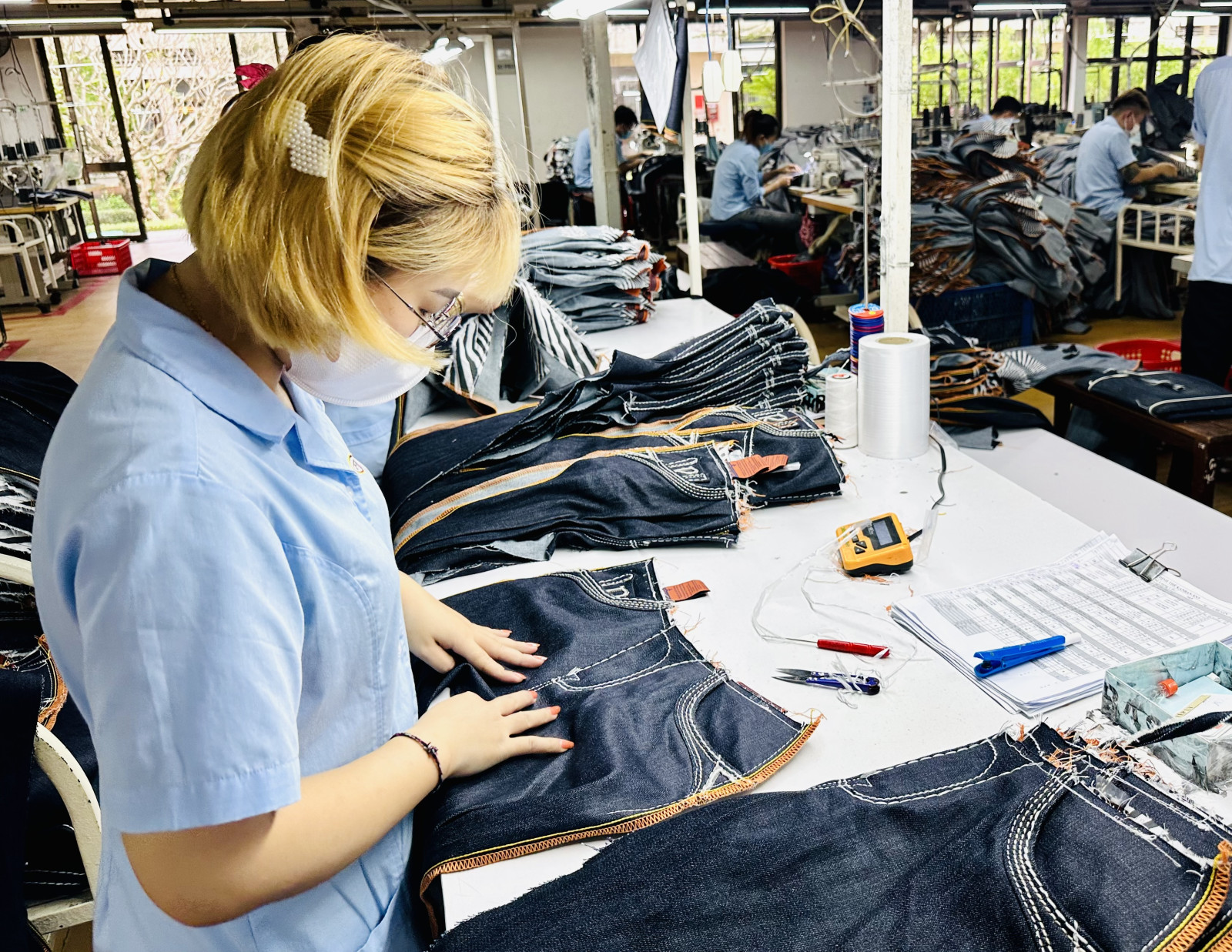Báo Bình Dương điện tử - www.baobinhduong.vn
Tổng Biên tập: LÊ MINH TÙNG
Phó Tổng Biên tập: HUỲNH MINH DÂN - NGUYỄN QUỐC LIÊM
Recently, Binh Duong has experienced a trade surplus with several markets that have signed and implemented Free Trade Agreements with Vietnam. While foreign-invested enterprises are successfully capitalizing on the opportunities presented by these agreements, domestic enterprises still face numerous obstacles that need to be addressed.

Production activities at Binh Duong Garment Joint Stock Company
There are still many problems
According to the recent assessment of the Ministry of Industry and Trade on the implementation of the Comprehensive and Progressive Agreement for Trans-Pacific Partnership (CPTPP), the Vietnam - European Union Free Trade Agreement (EVFTA) and the Vietnam - United Kingdom of Great Britain and Northern Ireland FTA (UKVFTA), although activities to support enterprises to improve their capacity are regularly implemented in localities, most of these activities are mainly carried out within the framework of the general development policies of localities, not specifically for the implementation of a certain FTA. This leads to support activities being scattered and not focused on areas or industries with strengths in each locality.
The business community in the province agrees with the Ministry of Industry and Trade's assessment that the programs intended to connect banks and businesses for leveraging export opportunities from Free Trade Agreements (FTAs) have not yet reached their full potential. While trade promotion activities, information updates, and trade connections in markets involved in the EVFTA, CPTPP, and UKVFTA are being promoted, they have not effectively addressed the challenges that enterprises face.
According to Ms. Truong Thuy Lien, Vice President of Binh Duong Leather and Footwear Association, Small and medium enterprises (SMEs) face numerous challenges in meeting the demands of the international market. Although the government has implemented various support policies, these often become entangled in practical difficulties for several reasons. For instance, accessing the 2% interest rate credit support package involves overly complicated procedures. To qualify for a loan, businesses must maintain separate accounting for it, which requires an entirely different accounting system. Additionally, the loan amount can only be used for specific purposes outlined in the 2% package and cannot be applied to other needs.
In the context of the wood industry, Ms. Do Thi Kim Loan, the Director of Sao Nam Company located in Nam Tan Uyen Industrial Park, emphasized that when countries enter Free Trade Agreements (FTAs) and reduce taxes to 0% or very low levels, member countries often impose high standards and regulations on imported goods. This creates numerous technical barriers for businesses. For the European Union market, to meet the strict requirements of this market, they must first understand what customers require, businesses must develop plans, and must apply digital transformation to monitor the growth of crops or livestock on a daily basis.
Need a comprehensive solution
Ms. Phan Le Diem Trang, Vice President of Binh Duong Textile and Garment Association, shared that currently, textile and garment fashion products are exported to many markets around the world and are favored by consumers in many countries. Our country's participation in many FTAs is an opportunity to open up the export markets and participate deeply in the global supply chain. However, enterprises require comprehensive solutions and guidance to support their journey towards sustainable development. This includes establishing green criteria as well as developing and implementing thorough processes and programs. Additionally, it is essential to assist businesses in enhancing their internal capabilities, focusing on both resources and human resources.
Ms. Truong Thuy Lien stated that the leather and footwear industry is highly integrated. Previously, the demand for sustainable development was primarily driven by brands, but it is now mandated by law. For the leather and footwear industry, major export markets such as the US, the European Union, etc. require products to meet very high standards.
Recently, the government has decided to assign the Ministry of Industry and Trade the responsibility of coordinating with various ministries, branches, localities, and associations to create an ecosystem that takes advantage of FTAs. The concept of this ecosystem is to connect all relevant entities along the value chain. Initially, this ecosystem will focus on six industries: textiles, footwear, seafood, coffee, cinnamon, and cashews. The aim is to bring these stakeholders together to leverage their strengths and identify key strategies for maximizing the opportunities presented by FTAs.
Ms. Phan Thi Khanh Duyen, Deputy Director of the Provincial Department of Industry and Trade, emphasized that To continue promoting the export of goods and maximize the benefits of FTAs, the industry and trade sector will focus on supporting enterprises in identifying new and potential markets, as well as enhancing the competitiveness of their products. This includes developing measures, solutions, and policies to assist businesses, particularly small and medium-sized enterprises (SMEs).
A key objective of the industry and trade sector is to create supportive programs that boost the competitiveness of enterprises through trade promotion. This involves connecting businesses with foreign investors, facilitating access to technology, providing human resource training, and offering assistance in administration, credit, and more.
|
Mr. Ngo Chung Khanh, Deputy Director of Multilateral Trade Policy Department, Ministry of Industry and Trade: By September 2025, it is anticipated that the ecosystem designed to leverage FTAs will be operational. By that time, we hope that the challenges in taking advantage of opportunities presented by FTAs will have been addressed. This ecosystem will bring together resources from various ministries, sectors, and associations, enabling a more effective utilization of FTAs. |
Reported by Tieu My - Translated by Ngoc Huynh